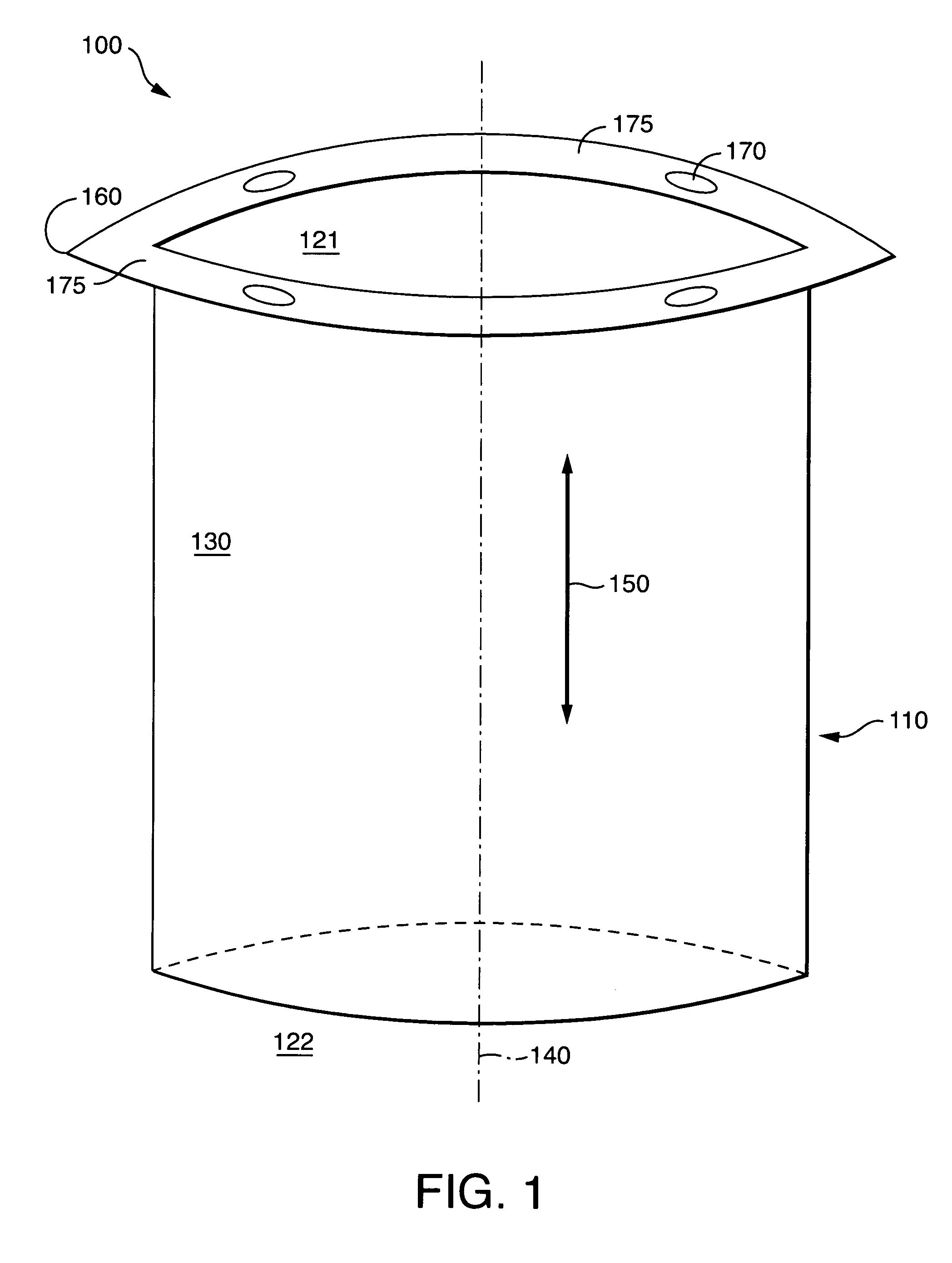Surgical devices and related methods thereof
a technology of surgical devices and electrodes, applied in the field of surgical devices, can solve the problems of neurological deficit, bbb, significant postoperative pain and discomfort, etc., and achieve the effect of minimizing the risk of brain damag
- Summary
- Abstract
- Description
- Claims
- Application Information
AI Technical Summary
Benefits of technology
Problems solved by technology
Method used
Image
Examples
example
[0113] This example describes a contemplated surgical method for removing a deeply seated brain tumor utilizing the devices of the present invention. While this example describes the excision of a brain tumor, the technique may be applied to any unwanted brain mass or unwanted brain lesion. First, a burr hole is placed within the cranium. Second, one of the cannula devices of the present invention is secured within the burr hole (see, e.g., FIGS. 1-3). The cannula device provides a small and narrow passageway leading directly to the surface of the brain tumor. Additionally, the cannula device provides a point of access for the insertion of surgical instruments. Third, tumor biopsy instruments are passed through the cannula device and a biopsy of the brain tumor is completed. Fourth, tumor fragmentation instruments (e.g., ablation instruments) are passed through the cannula device and the brain tumor is fragmented. Fifth, one of the cutting and cauterizing devices of the present inve...
PUM
 Login to View More
Login to View More Abstract
Description
Claims
Application Information
 Login to View More
Login to View More - R&D
- Intellectual Property
- Life Sciences
- Materials
- Tech Scout
- Unparalleled Data Quality
- Higher Quality Content
- 60% Fewer Hallucinations
Browse by: Latest US Patents, China's latest patents, Technical Efficacy Thesaurus, Application Domain, Technology Topic, Popular Technical Reports.
© 2025 PatSnap. All rights reserved.Legal|Privacy policy|Modern Slavery Act Transparency Statement|Sitemap|About US| Contact US: help@patsnap.com



